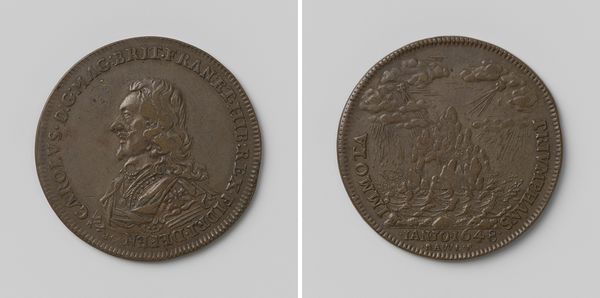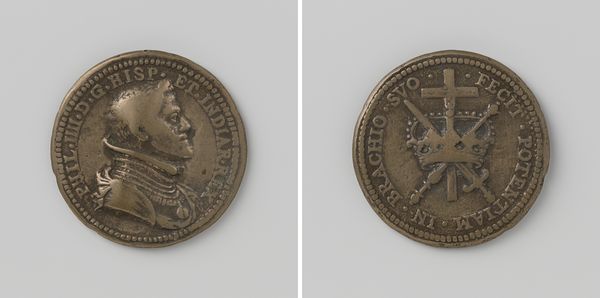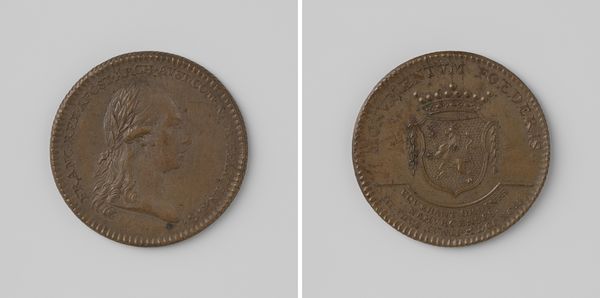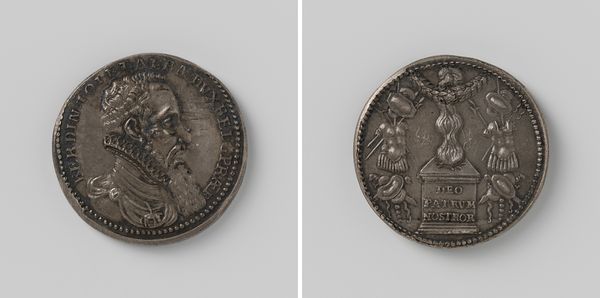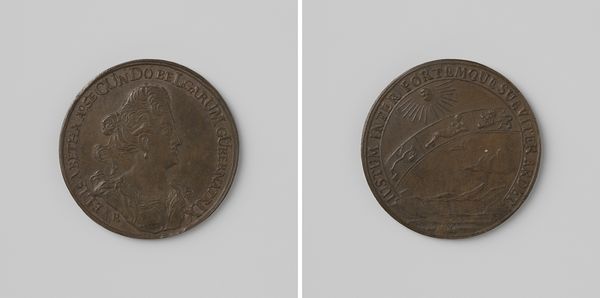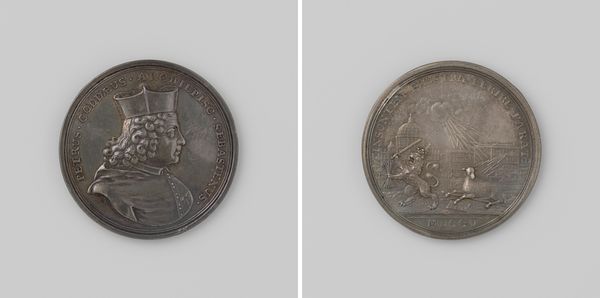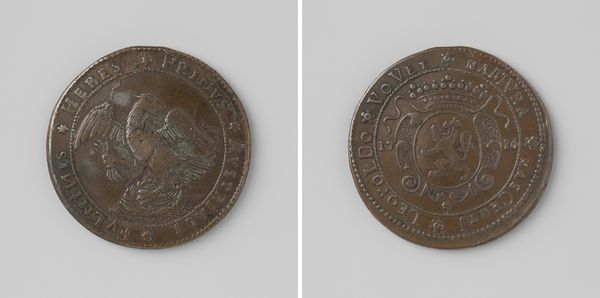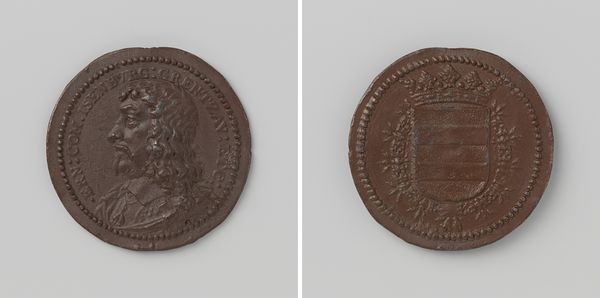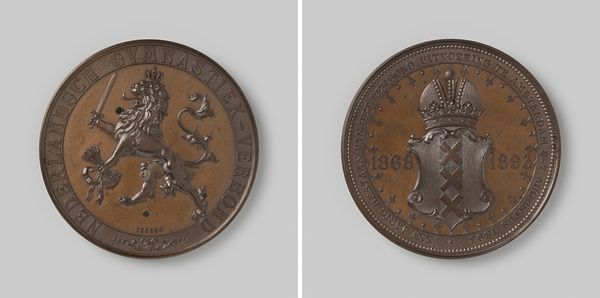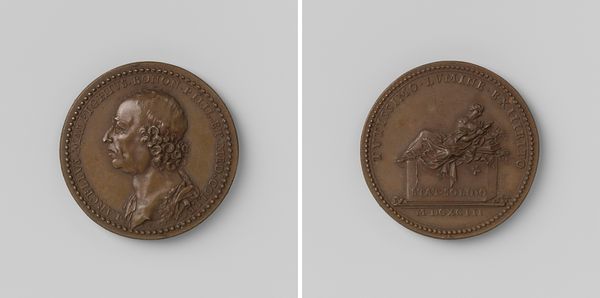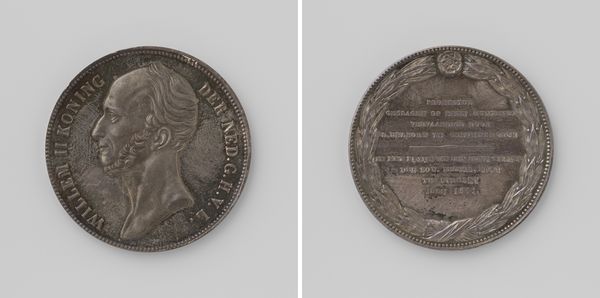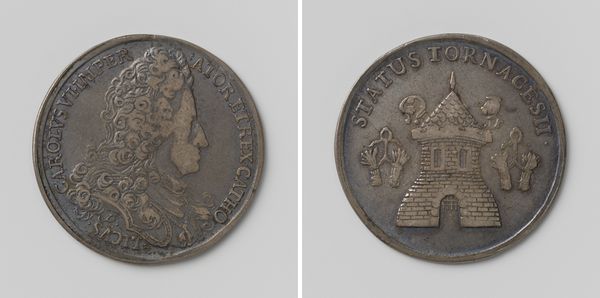
print, metal, relief, sculpture
#
portrait
#
baroque
# print
#
metal
#
sculpture
#
relief
#
sculpture
Dimensions: length 4.8 cm, width 4 cm, weight 31.40 gr
Copyright: Rijks Museum: Open Domain
Curator: So, let's talk about this impressive medal featuring Ernst, Count of Mansfeld, crafted between 1622 and 1626 by Adriaen Symonsz. Rottermont. It is a baroque metalwork relief and a very detailed print. Editor: It looks…heavy. Both literally, as a physical object, but also emotionally. All that detail, the inscription—it gives off this feeling of immense importance. It has gravitas, right? Like a tiny, pocket-sized monument. Curator: Absolutely. As a print of a metal relief sculpture, its very construction speaks to the ways in which power and legacy were communicated in the early 17th century. Medals such as this served to memorialize and disseminate a specific image of Ernst von Mansfeld, especially regarding his military achievements. The strategic dissemination of such imagery would impact political discourse across Europe. Editor: I’m thinking about that stern profile, that elaborate coat-of-arms. Each of those details were designed to convey power, solidify his identity. The craftsmanship must have been incredibly refined. Curator: The skill is certainly undeniable, particularly in capturing the intricate details. Look at the text surrounding the portrait. The coat of arms on the reverse offers another layer, proclaiming family history, lands held, and allegiances—essential components for establishing the subject’s authority in an era defined by dynastic rivalries and political upheaval. Editor: It’s interesting how these historical pieces can feel incredibly relevant, even today. It really speaks to our need to create images, narratives around power, ourselves, others, right? Social media is filled with profiles mirroring the power of such medals, and this artwork seems like such an amazing precursor. Curator: Precisely. The use of symbolism and the calculated construction of an image speak volumes about the intersections of art, politics, and identity formation across centuries. In this case, it underscores questions of what it means to rule and how these images shape history. Editor: I like the echo in my mind now. All that importance condensed into such a small, sturdy form. And the echoes with modern social construction of identity are compelling. It just leaves me wanting to explore its story further, doesn't it? Curator: It really does invite more questions than answers, and considering all of that, our dialogue makes this small token quite the powerful art piece to delve into.
Comments
No comments
Be the first to comment and join the conversation on the ultimate creative platform.
